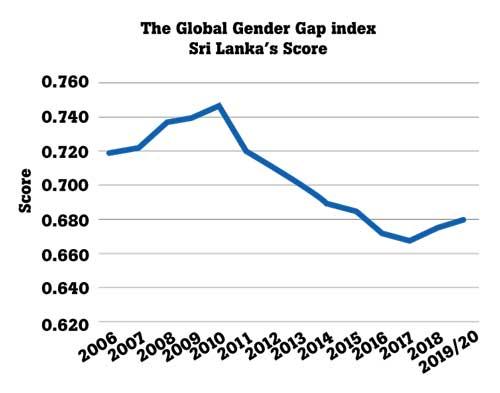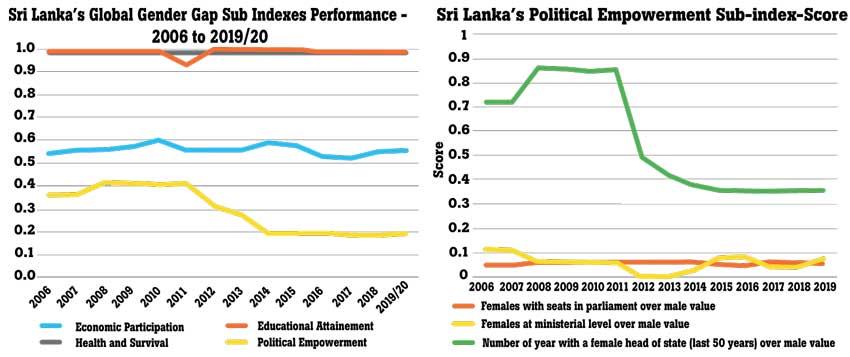Reply To:
Name - Reply Comment
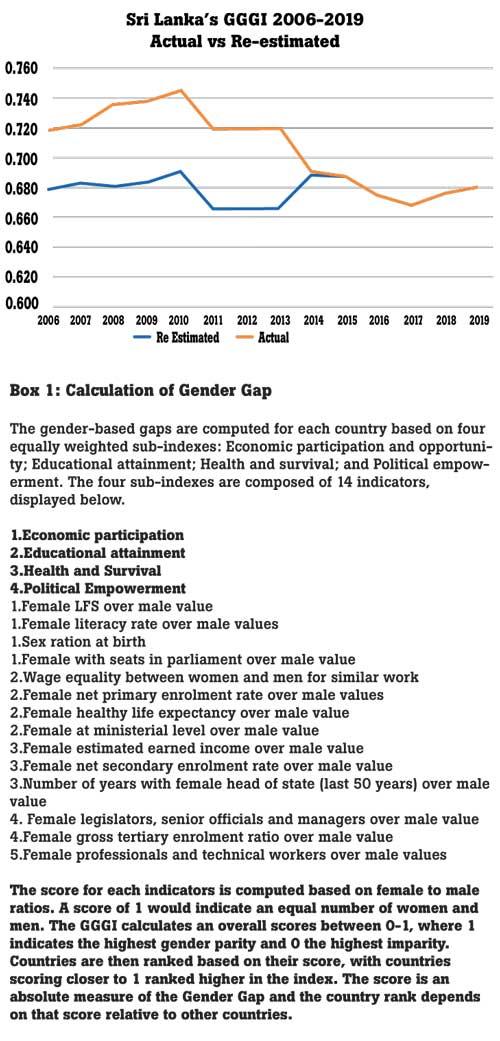
 The World Economic Forum’s Global Gender Gap Index (GGGI) is a composite index that measures the extent of gender-based gaps in and among countries and tracks progress towards reducing these gaps over time. See Box 1 on calculation of the Gender Gap.
The World Economic Forum’s Global Gender Gap Index (GGGI) is a composite index that measures the extent of gender-based gaps in and among countries and tracks progress towards reducing these gaps over time. See Box 1 on calculation of the Gender Gap.
Sri Lanka is recorded as taking a nose-dive over the decade in terms of its gender gap, with a dramatically worsening score on the GGGI. This Insight shows that this reduction in Sri Lanka’s
score is due to a quirk in the calculation method, which inflated Sri Lanka’s past scores.
Adjusting for this anomaly shows that Sri Lanka’s score on the GGGI is better read as having always been rather low, and has in fact remained about the same for over a decade.
Sri Lanka’s dramatic declinein the Global Gender Gap Index
In 2006, the year in which the GGGI was introduced, Sri Lanka was ranked 13 out of 115 countries included in that year’s assessment, ahead of countries such as Australia, Canada, Switzerland and Singapore. However, in the latest edition of the report in 2019/20, Sri Lanka was ranked at 102 out of 153 countries.
Over a period of 13 years, Sri Lanka’s ranking dropped precipitously by 89 positions. That is, Sri Lanka has the largest ranking decline in GGGI out of the 153 countries tracked since the introduction of the index. Exhibit 1 provides a summary of Sri Lanka’s performance in the GGGI from 2006 to 2019/20.
Since 2006, most countries have recorded improvements in their GGGI score.
However, Sri Lanka has experienced a steady decline in its GGGI score since 2010. In 2006, countries such as Singapore, Ethiopia and France were ranked at 65th, 100th and 70th positions respectively, all far behind Sri Lanka’s impressive 13th position. In contrast, in 2019/20, Singapore, Ethiopia and France improved their absolute score and increased their rankings to 54th, 82nd and 15th positions, respectively, while Sri Lanka dropped to the 102nd position.
Sri Lanka has performed poorly relative to its South Asian peers as well. Over the period 2006 to 2019/20, almost all the South Asian countries (except Bhutan) have made progress in closing their gender gaps, which is evident from the upward trends recorded in each country’s GGGI score (See graph). South Asian countries such as India, Nepal and Bangladesh, which started off with much lower scores than Sri Lanka, have, over the 13-year period, caught up. In the latest edition of theindex, Bangladesh and Nepal were ranked in 50th and 101st positions respectively, ahead of Sri Lanka. In 2006, these two countries were ranked in 91st and 110th positions respectively.
Explaining Sri Lanka’s gender gap decline since 2010
Disaggregating Sri Lanka’s GGGI score by each sub-index score makes it apparent that the decline over the last 10 years is predominantly due to the decline in the score of the Political
Empowerment Sub-index. When disaggregating the scores further, it is apparent that even within this sub-index, it is only one of the three indicators that is driving the decline of Sri Lanka’s score on the GGGI.
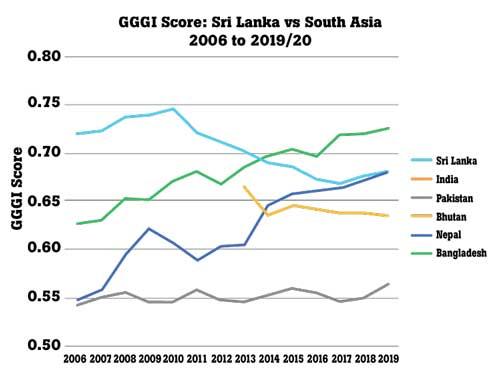
The three indicators that make up the political empowerment sub-index are: (1) Female to male ratio of seats in parliament; (2) Female to male ratio of those serving at the ministerial level; and (3) Female to male ratio of years as the head of state (in the last 50 years).
It is this third indicator –the ratio of years as the head of state – that drives the dramatic decline in the GGGI score from 2010 to 2019 (See graph).
Sri Lanka had the distinction of electing the world’s first woman head of state when Sirimavo Bandaranaike was elected to be prime minister in 1960 and served her first term till 1965. Her second term started in 1970.
The GGGI index calculates for the head of state gender gap indicator over 50 years. Hence, in calculating the index after 2010, that indicator declined, as Bandaranaike’s first term was counted less after 2010 and then not at all after 2014.
Re-estimating Sri Lanka’s gender gap trajectory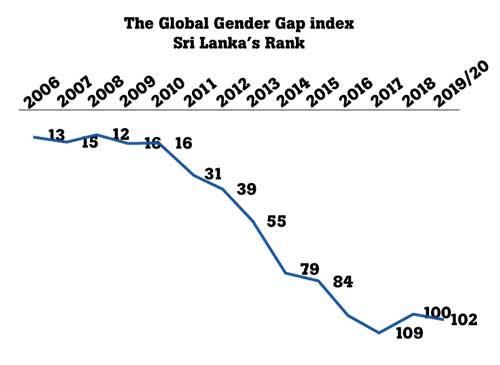
Verité Research re-estimated Sri Lanka’s GGGI score for the period 2006 to 2018, using the 2019 value for the gender gap indicator on the “years with a female head of state”. The results are illustrated in the graph.
The re-estimated score shows that Sri Lanka’s 2006 GGGI score would have been approximately equal to its 2019 score, with the above adjustment. That means, when the indicator for having a woman head of state is taken out of the consideration, Sri Lanka’s score does not show a decline, but remains about the same over the period, with some fluctuations.
It also means that, since the introduction of the index in 2006, on all the other factors measured, Sri Lanka has not made progress towards reducing its gender gap.
(Verité Research is an independent think-tank based in Colombo that provides strategic analysis to high level decision-makers in economics, law, politics and media. Comments are welcome. Email [email protected])
